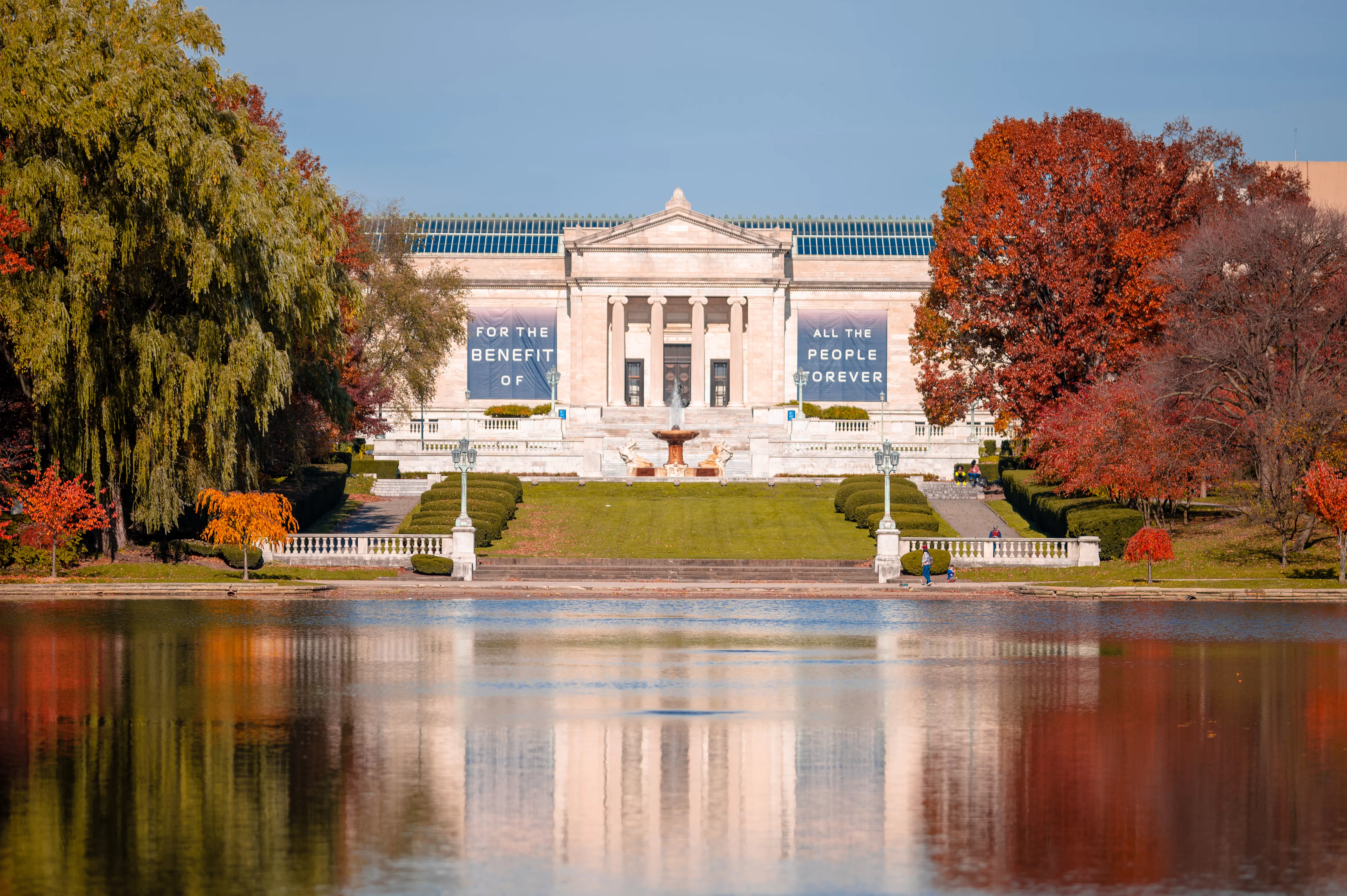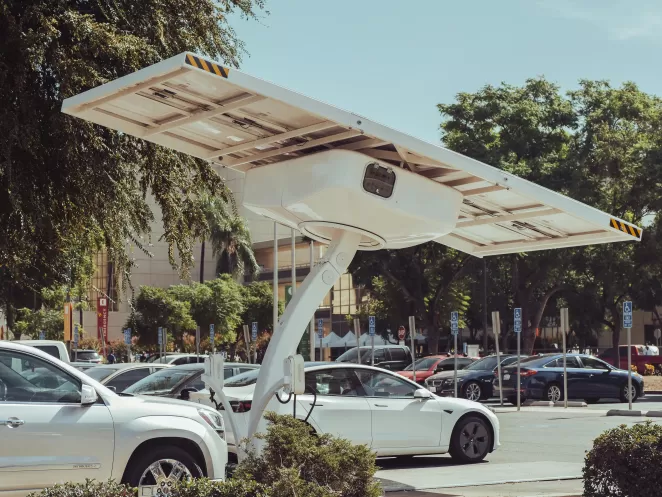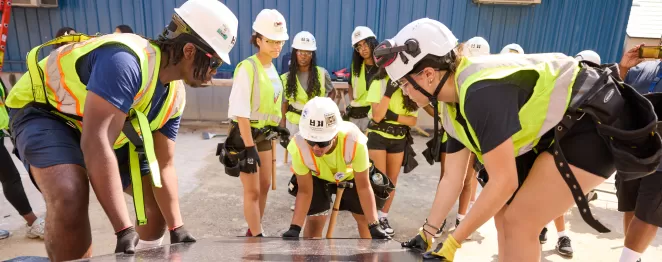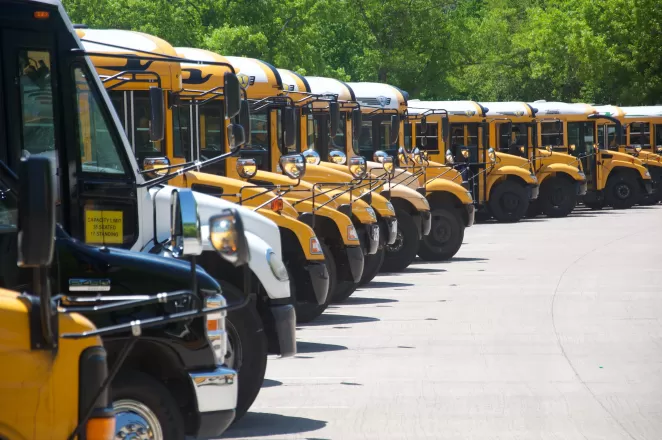Preserving Art and the Planet: U.S. Cultural Institutions' Role Take on the Fight Against Climate Change

The Cleveland Museum of Art's journey to sustainability shows how the art conservation team's needs led to a solution that made their jobs easier, cut their energy bills, and reduced their carbon emissions.
A museum is meant to be a place to understand, appreciate, and even to stand in awe. The physical environment within an exhibit should enhance, never distract from, the visitor’s experience: whether it’s a 10-year-old child staring wide-eyed at a medieval suit of armor, an amateur painter admiring the brush strokes of Monet’s water lilies, or anthropology students contemplating wooden ceremonial masks from western Africa.
The Cleveland Museum of Art (CMA) is known worldwide for its art and artifacts, but without the proper indoor environment and energy system, the museum’s armor could rust, paintings fade, and wood swell and crack. Maintaining a priceless collection involves precision climate control, which in turn requires a lot of energy, and a lot of money. And if the climate control systems are inefficient, the wasted energy use contributes needlessly to the greenhouse gas emissions that are driving climate change.
Laura Resch is one of the employees responsible for caring for the Cleveland Museum’s collections, and because of that, she has a close understanding of the institution’s heating, cooling, and ventilation systems – and the risks if they fail.
“There are so many factors that we have to consider when we’re trying to keep cultural heritage safe,” says Resch, the museum’s assistant preventative conservator. “Objects are really sensitive to fluctuations in humidity and temperature, and we need to make sure that we’re doing the best for our objects to stay as stable as possible.”
CMA has recently overhauled its climate control systems that control the air quality for its 18,000-square-foot conservation suite, a collection of labs where art conservation specialists maintain the stability of artworks and prepare selections from the museum’s 63,000-piece collection for display or storage. The project will significantly increase energy efficiency, reducing the museum’s carbon footprint and saving an estimated $40,000 a year.
The CMA’s energy efficiency project is a prime example of the ways in which museums, zoos, gardens, historical sites and other cultural institutions are taking steps to reduce their greenhouse gas contributions, says Sarah Sutton, the CEO and co-founder of Environment and Culture Partners. ECP, an America Is All In Coalition Partner, is a national organization staffed by museum professionals and committed to helping these institutions take meaningful climate action.
“Energy consumption is the second highest part of every cultural institution’s budget (and) it’s also our greatest impact on the environment,” Sutton explains. “We’re learning that there are some excellent ways to take care of all those artifacts and all those animals and plants, and our visitors, but reduce the energy use and save money and reduce carbon.”
ECP’s Culture Over Carbon Project initially brought together 130 cultural institutions to collect energy usage data and share strategies for reducing their carbon emissions. The idea was to help these institutions, and their peer organizations, identify ways in which they could make a meaningful difference in their carbon contributions while keeping their collections safe and their guests comfortable.
“There are some 35,000 museums in the country,” Sutton says. “We estimate there are four million metric tons of (carbon dioxide) emitted by museums, just in the energy operations.”
In Cleveland, the conservation suite is part of a 2008 addition to the 108-year-old museum, and it was designed for the highest standards of art conservation, says Paul Krenisky, the Museum’s Associate Director of Facilities. The labs were designed to maintain 50% relative humidity at all times while achieving 100% air exchange, bringing in 100% fresh air from the coldest, dryest Cleveland winters to hot and humid summers. The system worked, but “it was an energy hog,” he says.
“The building is kind of like the art it houses. It’s very fragile. It’s delicate. It does not like change. If we had a power failure or a utility issue or something like that, the systems would always react, but things would shut down and restart and that’s when we would see the problems.”
Those problems sometimes included water dripping from the ceilings, an alarming event when priceless artworks were being treated below. The conservators would cover everything in plastic overnight, but “it came to the point where we realized that this is not sustainable,” says Sarah Scaturro, the museum’s Eric and Jane Nord Chief Conservator. “It was a lot of strain on our team to make sure that at any one point, art wasn’t in the pathway of a mechanical overhead that might fail.”
The museum took action with the help of the Frankenthaler Climate Initiative, a grantmaking program created by the Helen Frankenthaler Foundation in 2021 to support sustainability and energy efficiency projects in the visual arts sector. Philanthropic funding, and some of the funding opportunities of the Inflation Reduction Act, is essential for the cultural sector’s energy improvements – especially for museums like the CMA that are free to the public. The Frankenthaler-funded work has included reconfiguring the duct work and making other modifications to airflow and altering temperature and humidity ranges to allow for more gradual seasonal fluctuations.
Beyond the cost savings and the protection of the art, the museum wants to reduce its contribution to the climate crisis, Scaturro says.
“What I really love about museum conservation, art conservation, and nature conservation is that we’re actually trying to do the same thing. We’re trying to make the resources we have at hand be sustainable for future generations.”
The CMA is one of 175 cultural institutions that have participated in the Culture Carbon project in its first few years, Sutton says. The energy savings and emission reductions are key to the project’s success, she says, but Environment and Culture Partners have a related goal – the organization is encouraging these cultural institutions to make climate action and sustainability part of their public-facing image.
Museums and cultural institutions are consistently identified as among the most trusted sources of information for most people, usually second only to friends and family. “We’re a safe place where we can talk about all kinds of challenging and interesting subjects, including climate change. You can come to a museum and learn about climate change and make your own decisions about how you’d like to act on it.”
It’s an uplifting message and one that more museums are recognizing their role in sharing. But ultimately, this move by CMA and other cultural institutions is essential to their existence – because as Assistant Preventive Conservator Resch says, “We're facing an uncertain future when it comes to energy consumption and to our climate situation. If we're able to be more flexible and to pivot when we need to, we're going to be able to ensure that we can care for our collection in the long term in a more sustainable way.”
Header image: Erik Drost, CC BY 2.0, via Wikimedia Commons




